Nostalgia was the theme of my first day back in Boston.
The Approach
I drove in from the west on Highway 2, a winding, tree-shaded road with signs made for old-timers: “Exit 125… Old Exit 50.” The new numbering system corresponds to the nearest mile marker; the old one was sequential, a nostalgic throwback. (The posted speed limits were another nostalgic note. They said “55 MPH,” but, long forgotten, traffic moved at a minimum of 65.)


One by one, I passed exits with ties to Emilie Loring. First came the exit to Princeton, MA, the summer home of fellow author Sara Ware Bassett, and later, the exit for Harvard, MA where Clara Endicott Sears built “The Pergolas” and established her Fruitlands Museums. Then came Marlboro, Victor Loring’s home town, but it was spelled “Marlborough” then, and Lexington, where Emilie’s son Selden made his home.



On Foot in Cambridge
I arrived in Cambridge and set out on foot. The azaleas are in full bloom in West Cambridge, a neighborhood of aristocratic, old homes, including Henry Wadsworth Longfellow’s. The famous Mount Auburn Cemetery is here, too, the final resting place of “the great and the good,” including Harvard presidents, Emilie’s grandfather Jerome Boles, and her great-grandfather John Boles. I’ll visit those graves another day.
“Val”
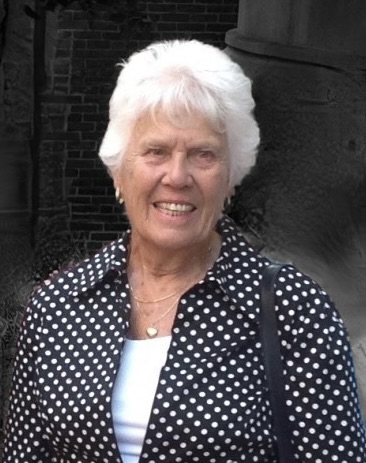

Nearing Harvard Square, I saw the Harvard Radcliffe Institute–formerly Radcliffe College. This was nice timing, as I am here with the Loring family to honor Emilie’s granddaughter Valentine Loring Titus, who passed away last spring. “Val” graduated from Radcliffe College with a degree in art history in 1952, a time when the majority of women did not attend college–or finish, if they did. A 1954 Time magazine article gives perspective about the years in which Emilie wrote and the time that followed: “The proportion of girls in college has slipped from 47% in 1920 (a vintage feminist year) to 37% now. Only a little more than half of all college girls get a bachelor’s degree.”
Early Ancestors
Around the corner from the institute, I get to Cambridge’s Old Burying Ground. Established in 1636, the oldest remaining stone is the one I have come to see: Ann Erinton, who died in 1653 at the age of seventy-seven. Ann is my eighth-great-grandmother. I spend so much time on Emilie Loring’s family that I often neglect my family’s New England roots. Ann’s husband drowned in Boston Harbor in 1630, the year that the town was founded. My ancestor Thomas Dewey arrived in Dorchester three years later, two years before Emilie’s ancestor, Richard Baker, arrived to the same community on the ship Bachelor.

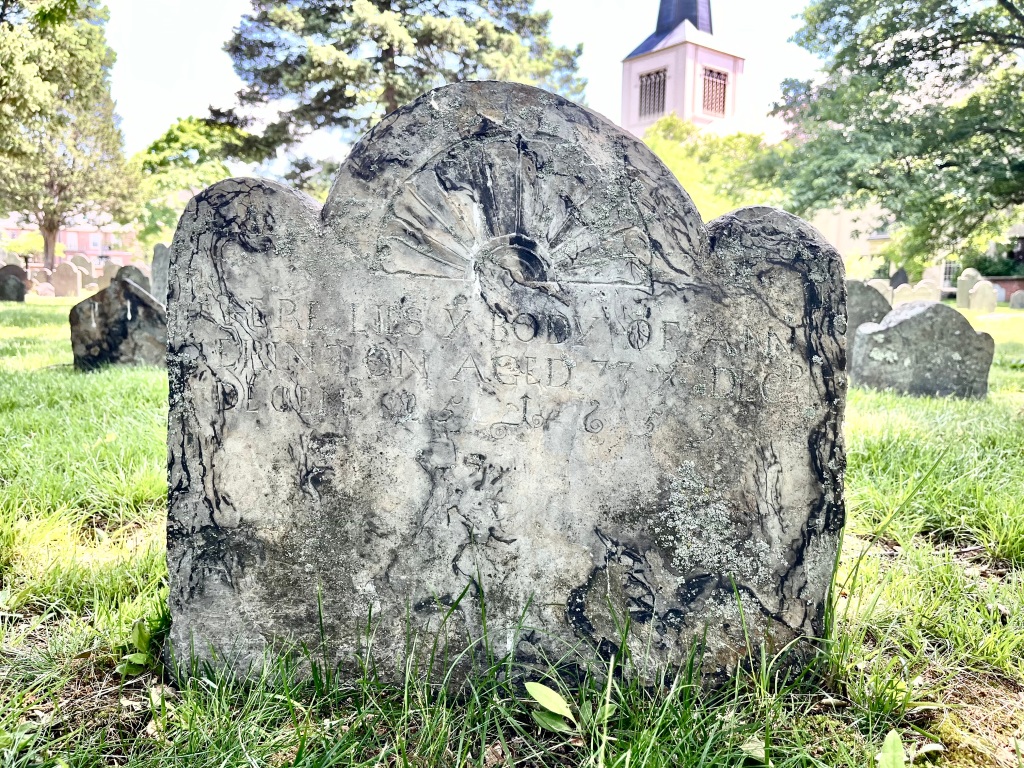
Beacon Hill
Then it’s on to the MBTA Red Line, which delivers me to the north end of Charles Street on Beacon Hill. In my twenty years of staying on this street or nearby, this feels like “my” area of Boston. I turn left and go straight up Chestnut Street. Before I reach it, I can identify Emilie’s home by the white columns that jut out just a little beyond the other facades. I look up and wonder, for the nth time, which floor(s?) her apartment occupied.
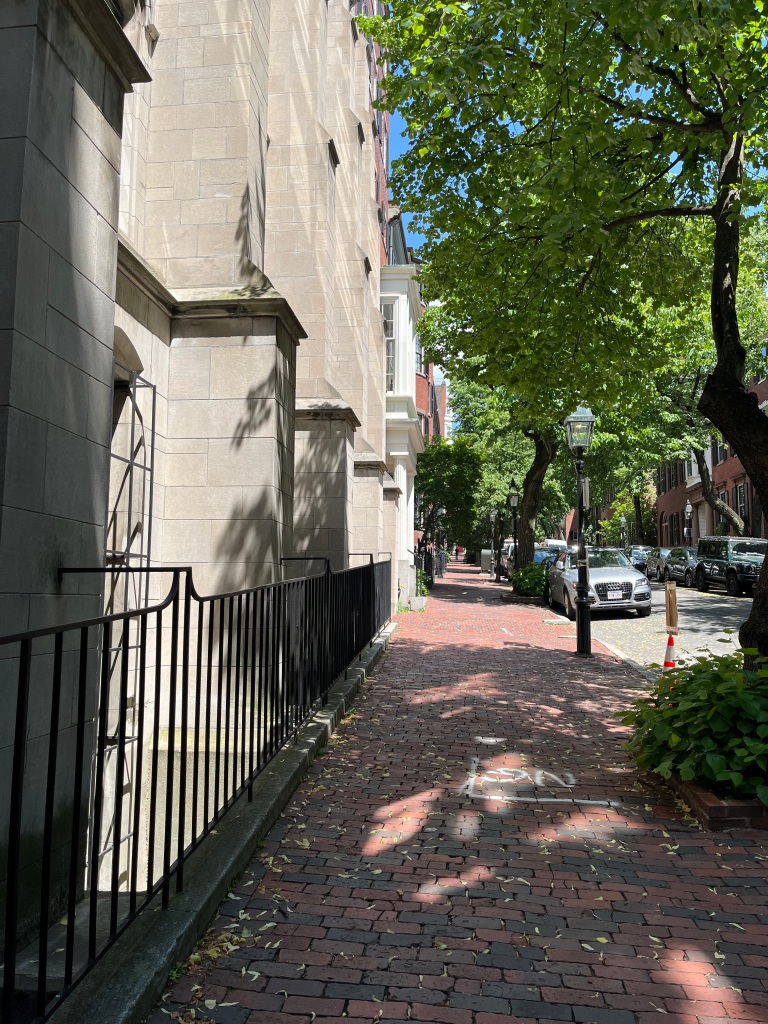

Boston Public Garden
Crossing Beacon Street, I enter the Boston Public Garden. Swan boats have been operating here since Emilie was born. The yellow arrow in the rightmost photo points to my room on the top floor of the Park Plaza Hotel where I stayed my first two weeks in Boston, entirely captivated by my view of the garden, the boats, and the very idea of being where Emilie had lived and seeing things that she saw.
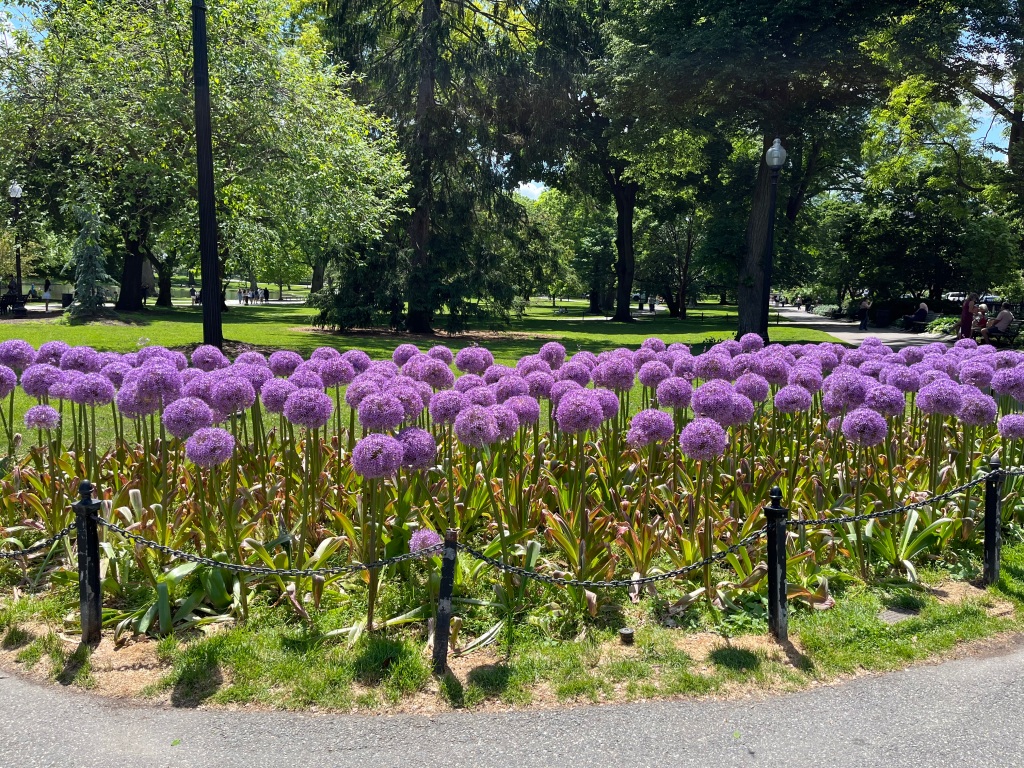

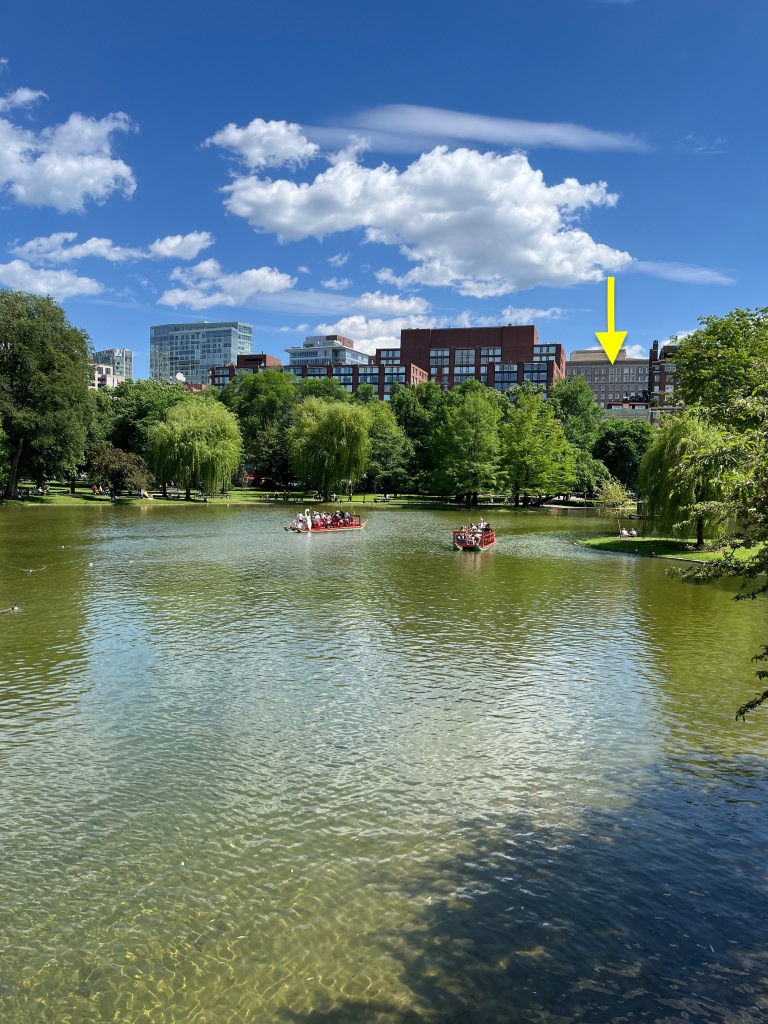
Back down to the subway–the Green Line this time–I emerge at Copley Square and a farmer’s market in front of the Boston Public Library. I will never tire of seeing this building.
Boston Public Library
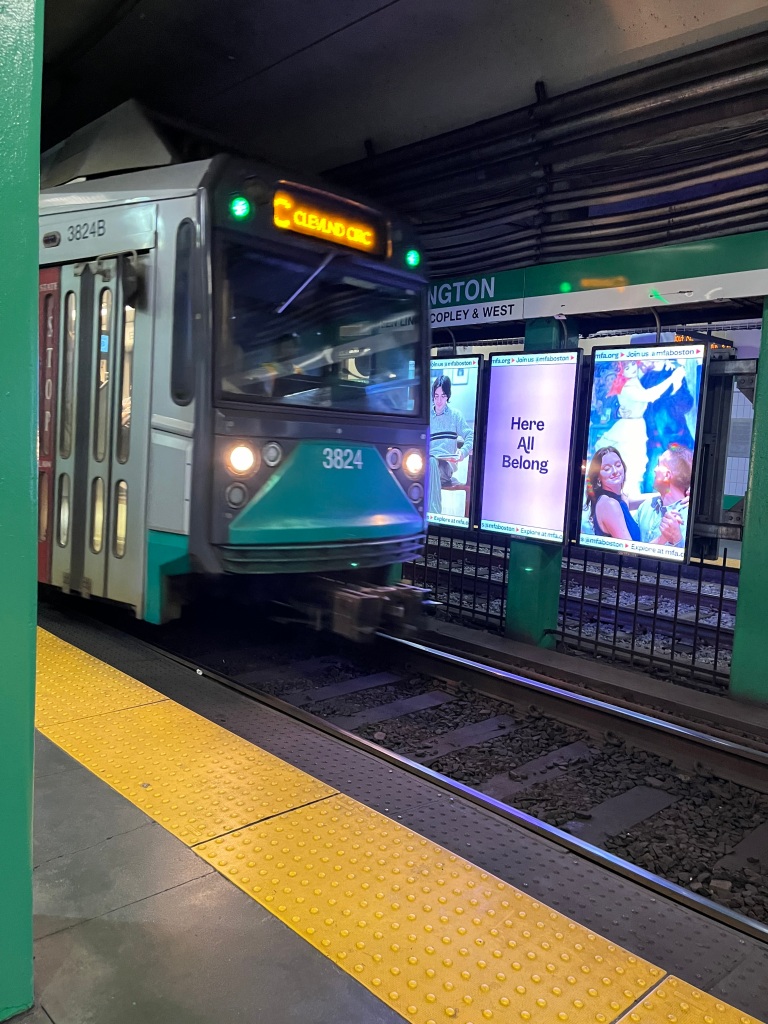
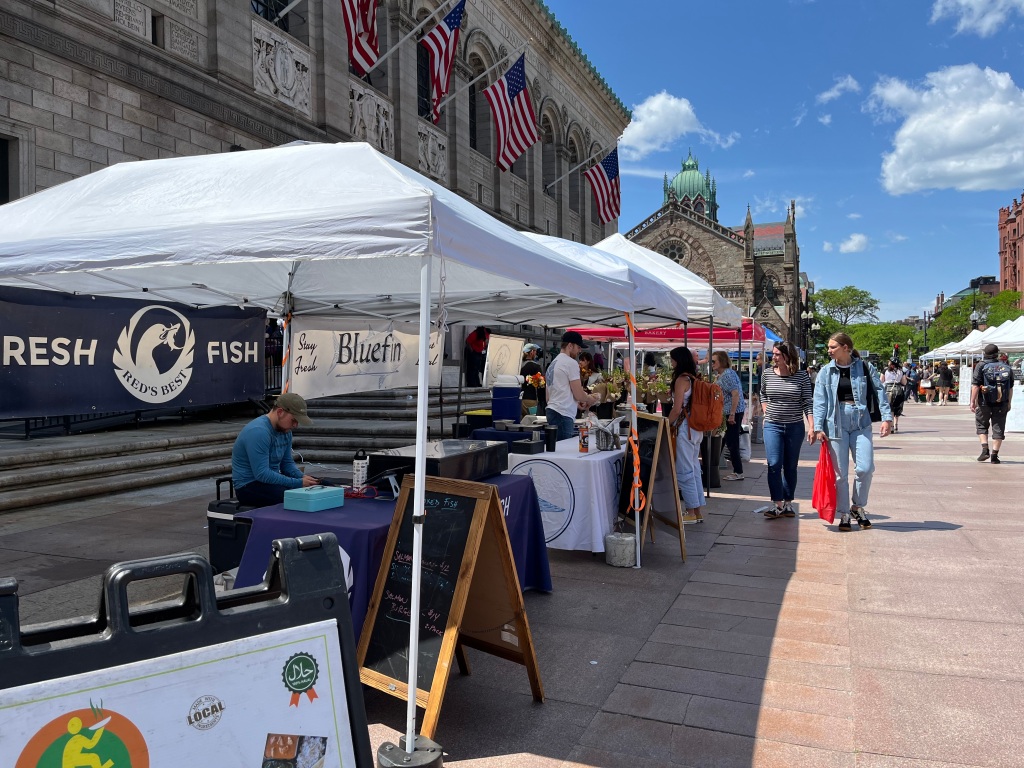



I am short of time, so I quickly walk through the courtyard garden and cross from the old building into the new. This is my destination today: the biography section on the second floor. I check the call number label at the end of each row of books. PR, PS… Yes! There it is! Happy Landings: Emilie Loring’s Life, Writing, and Wisdom, sandwiched between biographies of Jack London and H. P. Lovecraft.
And then it’s time to go.


Two constants in visiting Boston: more to see than one can realistically get done–and doing a lot of walking. I love it.

Happy Landings, everyone! I’ll be back soon with more from Boston!

Ann Erinton died in 1653 and the cemetery opened in 1804? Was she interred somewhere else?
LikeLike
Thank you for catching my typo. The Old Burying Ground opened in 1636. I’ll change it right away!
LikeLike
Dear Patti,
Great story telling as usual and retracing your steps and remembering our visits to Boston to visit Tony and Nancy Butler who lived in MIT. We drove in our motorhome as we covered 95, 000 miles circumnavigating the U.S and Canada. It was such a surprise when they came with police escort to welcome us to Boston. Now as you bring in your images, it brings me back to those fun summer visits and to Blue Hill, MA.
Love and thnaks,
Raqui
LikeLike
Thanks, Raqui. I didn’t realize that Tony Butler was at MIT and therefore had ties to both Boston and Blue Hill. Two very good places!
A police escort! That must have been something to see.
Keep getting better, so we can see you at a Defenders meeting again soon. Happy landings!
LikeLike
Dear Patti,
I hope and pray that my hemoglobin went up when I have a blood test on Wednesday with Dr. Riley and that my inflammation has gone down. The new medication causes me to sweat a lot and I am using my fans to cool me down and yet I feel cold.
I will send you photos of my police escort with Tony and Nancy in an email. It was indeed a surprise.
Love and hope to talk soon,
Raqui
LikeLiked by 1 person
Wow! Thanks for the travel-logue post! I have only been to Boston once in the 1990s. Very interesting that your family’s history is connected to Emilie’s with that boat trip.
Neat apartment building. Well kept on the outside!
One would think that Princeton and Harvard would be urban, part of Boston. Since the school is in Boston effectively. I saw on a map that they are small towns quite a bit outside of the City.
I took the time to research and see that Boston Library, being a large system, uses the Library of Congress coding system rather than Dewey Decimal. I was quite confused that neither your last name (author) or Emilie’s (subject) was used in the coding and it wasn’t a 900 series code. (The things that catch our eyes!)
Enjoy your travels! Happy Landings!
LikeLike
I wondered at the coding system, too. A book design consideration for the future: leave the bottom couple inches of the spine free, so the library stickers won’t cover up something important.
It took me awhile to figure out that Princeton and Harvard were small towns instead of their namesake colleges. The use and re-use of names here is crazy!
More from Boston soon. You’ll have to go sometime!
LikeLike